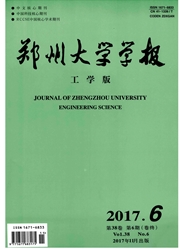

 中文摘要:
中文摘要:
对大跨度屋盖的遗传算法风振控制进行了研究,提出了一种采用主动调谐质量阻尼器(ATMD)进行风振控制的方法.首先介绍了风振控制理论,然后提出了大跨度屋盖风振控制的遗传算法,将位移和加速度响应均方差作为了控制效率的评价标准,并给出了该方法的实施步骤.最后将该方法应用于一大跨度平屋盖的风振控制,计算了屋盖上典型测点的位移和加速度均方差值,并与采用其他控制方法的计算结果进行了比较.结果发现笔者提出的遗传算法控制器准确高效,其中位移和加速度均方差分别平均减少了53.8%和44.6%,结构竖向位移峰值平均减少65.7%,加速度峰值平均减少56.2%,有效地控制了屋盖结构的风振响应.结果证明遗传算法可以准确预测相关参数,进而有效地控制大跨度屋盖风振响应,为工程实践提供了相应参考.
 英文摘要:
英文摘要:
A genetic algorithm based control design is proposed to control wind-induced vibration of long-span roof in this study.An active tuned mass damper(ATMD) controller is designed using the proposed methodology.Wind-induced control theory is presented firstly.The root mean square of displacement and acceleration responses are used as the evaluation criteria of control efficiency.Then procedures for control of wind-induced vibration of long-span roofs based on genetic algorithms are given.Finally the method is applied to the control of wind-induced responses of a long-span roof.The root mean square of displacement and acceleration responses is calculated for some typical measuring points.And the results are compared with those obtained from other controller.The overall results of GA-based controller are accurate and efficient.The root mean square values of displacement and acceleration of the sample points are reduced by 53.8% and 44.6% on average,respectively.GA-based controller reduces peak vertical displacement and acceleration of all sample points by 65.7% and 56.2% on average,respectively.GA-based control design methodology can obviously reduce wind-induced vibration of long-span roofs.As an accurate and effective tool in wind-induced vibration control,the proposed method can provides some references for practical projects.
 同期刊论文项目
同期刊论文项目
 同项目期刊论文
同项目期刊论文
 期刊信息
期刊信息
